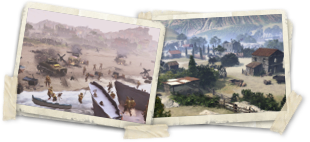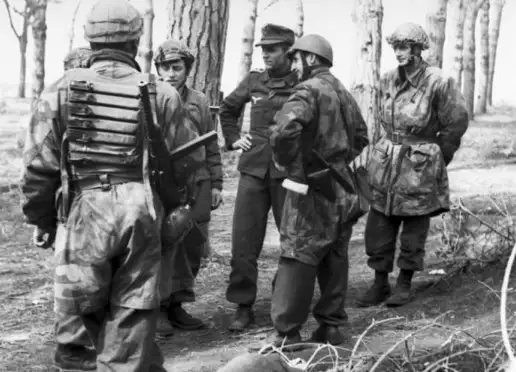
Experience it in game
Play through the battle yourself in the immersive Company of Heroes 3 campaign.
 Experience the dynamic campaign in game with
Experience the dynamic campaign in game with 
 Find out more
Find out moreGiven that The Story of G.I. Joe’s director William A. Wellman is said to have exclaimed: “let’s make this the god-damnedest most honest picture that has ever been made about the doughfoot” (‘doughfoot’ being slang for a US soldier), you’d imagine his movie set out to capture the Battle of Monte Cassino in a pretty realistic way.
Released in 1945 to a rapturous reception, this cinematic take on World War Two quickly earned a very solid reputation.
But this is Hollywood after all, so we’re going to delve deeper into the famed Monte Cassino film and – with the help of a historical expert – analyse what it gets right, and wrong.
The 1945 war flick (actually filmed while the Second World War was still taking place) stars silver screen icon Robert Mitchum, and snagged an impressive four Oscar nominations. Director Wellman had strong awards form behind him to be fair – his 1925 film Wings became the first film to snap up the Academy Award for Best Picture.
In total, The Story of G.I Joe was nominated for:
It was also named a top 10 film by the National Board of Review in 1945.
“There is obviously a strong emphasis on comradeship,” Parker says. “This is remembered fondly by most veterans from their overall war experience. However, there were only a tiny number of units at Cassino that had more than a couple of their original components still there, due to the huge turnover of men.”
The Clip
The Story of G.I. Joe
“Overall, the film accurately portrays the starkly unromantic business of being an infantryman in this theatre,” states Parker. “That said, like Pyle’s writing, it does have a certain austere romanticism in its celebration of the grit and endurance of the infantryman.”
Pyle was a Pulitzer Prize–winning journalist and war correspondent, so having his backing on the film gave it a great foundation. Probably due to this ability to draw on direct knowledge, it is often seen as quite accurate, with a 2020 report naming The Story of G.I. Joe as one of the top 50 greatest war movies ever made – 75 years after its release.

Bild 101I-578-1931-03A / Haas / CC-BY-SA 3.0
“Many of the characters are off-the-peg stereotypes/clichés of the day,” claims Parker. “The pooch who melts the hearts of the gruff GIs, good natured grumbling, the Italian lover boy flirting between fights, the tough sergeant who melts when he hears his son’s voice on a record.”
It seems that even with the best of intentions, the filmmakers couldn’t stop some of that Hollywood cheesiness creeping in.
The scenes in front of the (rather unconvincing-looking) monastery are clearly unrealistic, as movement that close would have automatically attracted shellfire. Parker understands why it was filmed that way for practical purposes, however.
Parker explains that under the rules of the Production Code (or Hays Code), films of the time were forbidden from showing graphic or realistic violence.
“For example, when people are shot or hit by shells, they just fall down, rather than have bits blown off, or guts spilling out. These sorts of horrors were vividly remembered by the veterans I met – perhaps more than anything else.”
Did you know?
Real American GIs served as ‘extras’ on the film
Tragically, Ernie Pyle would never get to see the movie himself. He was killed during the Battle of Okinawa, in the year of the film’s release.
Dwight D. Eisenhower, 34th US President, described The Story of G.I. Joe as the “finest war film” he had ever seen.
©Relic Entertainment. All rights reserved. Developed by Relic Entertainment. Entertainment, the Relic Entertainment logo, Company of Heroes and the Company of Heroes logo are either registered trademarks or trademarks of Relic Entertainment. Relic Entertainment is registered in the U.S. Patent and Trademark Office. All other trademarks, logos and copyrights are property of their respective owners.